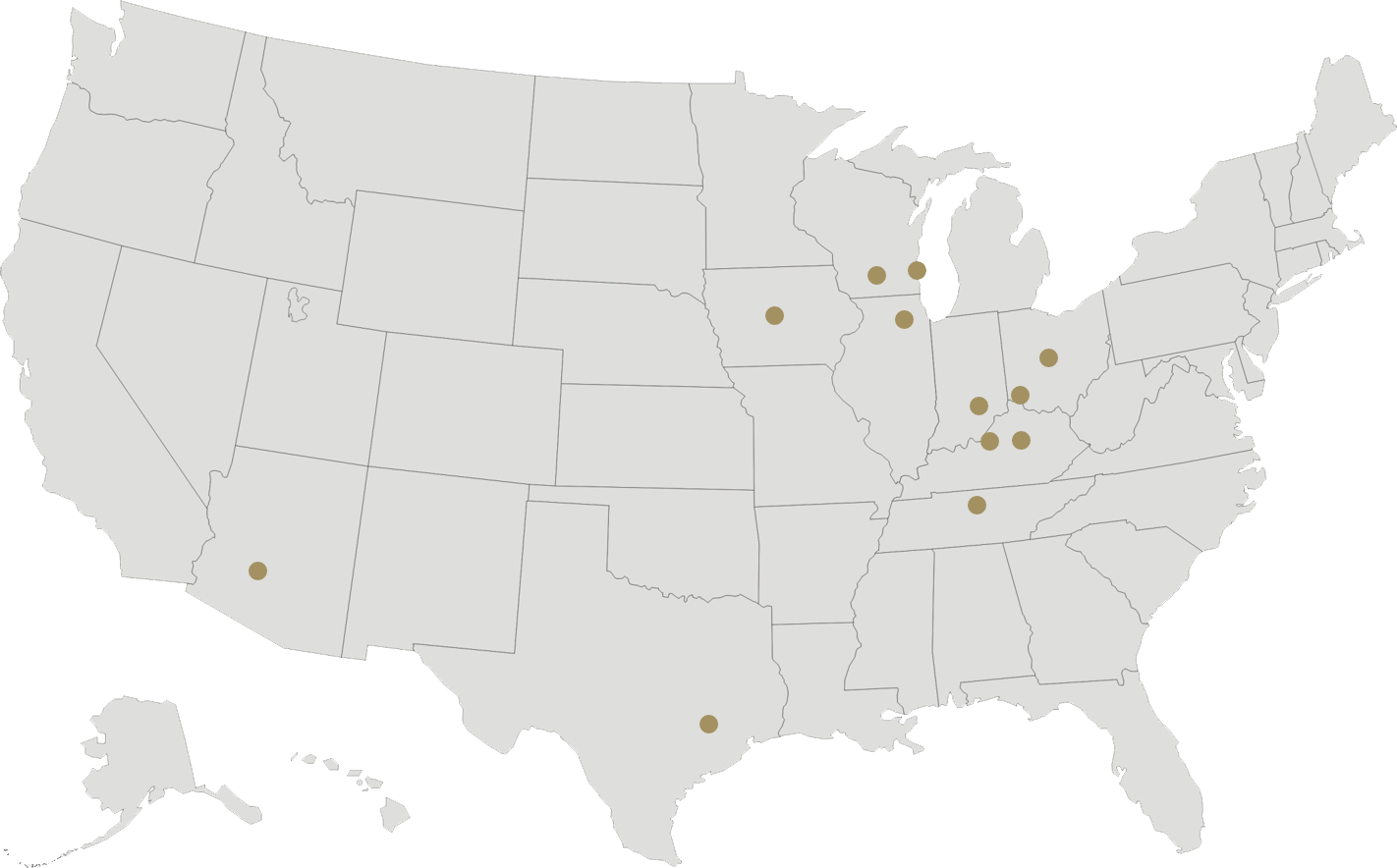Phase I – North Liberty is a rapidly growing community in Johnson County, near Iowa City. This growth required expansion of the existing wastewater treatment facility, originally constructed in 1998. In addition to growth of the community, the sensitive nature of the receiving stream, Muddy Creek, which flows through residential neighborhoods and near elementary and junior high schools, made an advanced treatment technology desirable.
We completed a facility plan that evaluated several options, considering both up-front capital and life-cycle costs, as well as non-economic considerations, such as reliability, flexibility, and ease of operation. We recommended converting the existing sequencing batch reactor activated sludge plant to a membrane bioreactor (MBR) process. The MBR is an advanced form of activated sludge that utilizes membranes to produce a very high-quality effluent – which appealed to the ecologically-minded City. The advanced treatment technology also allowed more flexibility in meeting future, more stringent regulations. The facility plan also evaluated funding options for the project. A State Revolving Fund (SRF) program loan was eventually used to fund the project.
The most significant feature of this project is application of a membrane bioreactor (MBR). MBR technology has been around for many years, but in terms of wastewater treatment, it is relatively new. North Liberty wanted to utilize an advanced treatment process to minimize its impact on and help improve the water quality of Muddy Creek.
Although there are several installations throughout the country, this technology had never been utilized on a municipal plant in Iowa. Critical to the success of the project was getting buy-in from the community, school district, environmental groups, and the Iowa Department of Natural Resources.
Achieving disinfection limits without use of chemicals or an ultraviolet system reduced operating costs. While most permits only require disinfection during certain months of the year, the MBR provides year-round disinfection without added cost. Simplified operations and improved process reliability help ensure consistent, high quality effluent at all times.
As a result of Phase 1 improvements, the reduced footprint of the plant allows for future expansion of the plant without the need to acquire more land. These benefits provide social and economic value to the community beyond conventional systems.
Phase II – Continued rapid growth of 2 to 5 percent per year required implementation of the Phase II plant expansion. Major goals for this expansion included increasing design capacity of the MBR treatment plant to accommodate a population of 28,000, adding biological nutrient removal (BNR), and adding biosolids dewatering and storage facilities.
Biological nutrient removal (nitrogen and phosphorous) was incorporated to meet the Iowa Nutrient Reduction Strategy (INRS) and help reduce the hypoxic region in the Gulf of Mexico. The design effort included using BioWin modeling software to evaluate and select the best configuration and most economical sizing for the BNR process.
Based on this effort, the Modified University of Cape Town (MUCT) process was selected for biological nutrient removal to meet the INRS treated effluent discharge goals of 10 mg/L total nitrogen and 1 mg/L total phosphorus.
Existing MBR treatment was expanded by adding a fourth MBR train. The newest membrane technology, LEAPprimary, promising a net energy savings of 25 percent for biological treatment because of the treatment efficiency of the MBR technology, was installed.
Phase II included the addition of a biosolids dewatering system and dewatered biosolids storage facility, which increased operational flexibility and reduced the cost of hauling.
On-site pilot testing was conducted to evaluate dewaterability; confirm operational parameters such as solids loading, flow, speed, and pressures; determine optimum polymer dose and full-scale design conditions; and evaluate operation and maintenance requirements. Based on a life-cycle-cost evaluation, the plant operator’s preference for operational and maintenance features and redundancy by having more than one dewatering channel, the rotary press technology was selected for full-scale design.
The design included construction of a new building to house one rotary press with six dewatering channels and a new biosolids storage facility. The dewatering building includes space to add one more rotary press unit in the future. The rotary press is designed to handle up to 108,000 gallons (18,000 lbs) per week.
During the first hauling event in spring 2017, biosolids disposal costs were significantly reduced compared to previous liquid land application methods, resulting in a savings of more than $50,000.
Construction of Phase II was substantially complete in May 2018.
Awards Won:
• ACEC IA Grand Conceptor Award
• ACEC IA Grand Place Award in the Water/Wastewater Category
• Iowa Governor’s Environmental Excellence Award for Water Quality
